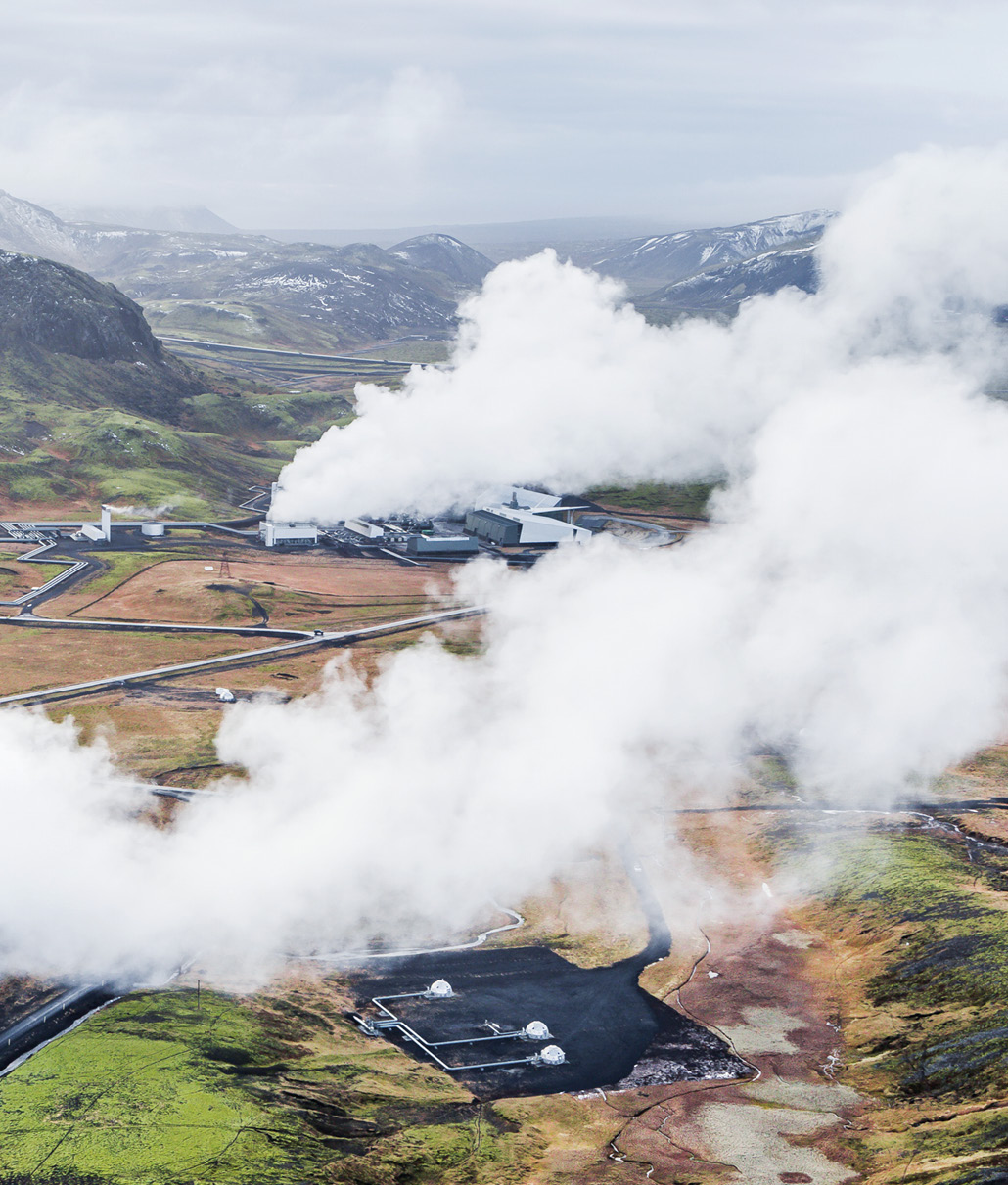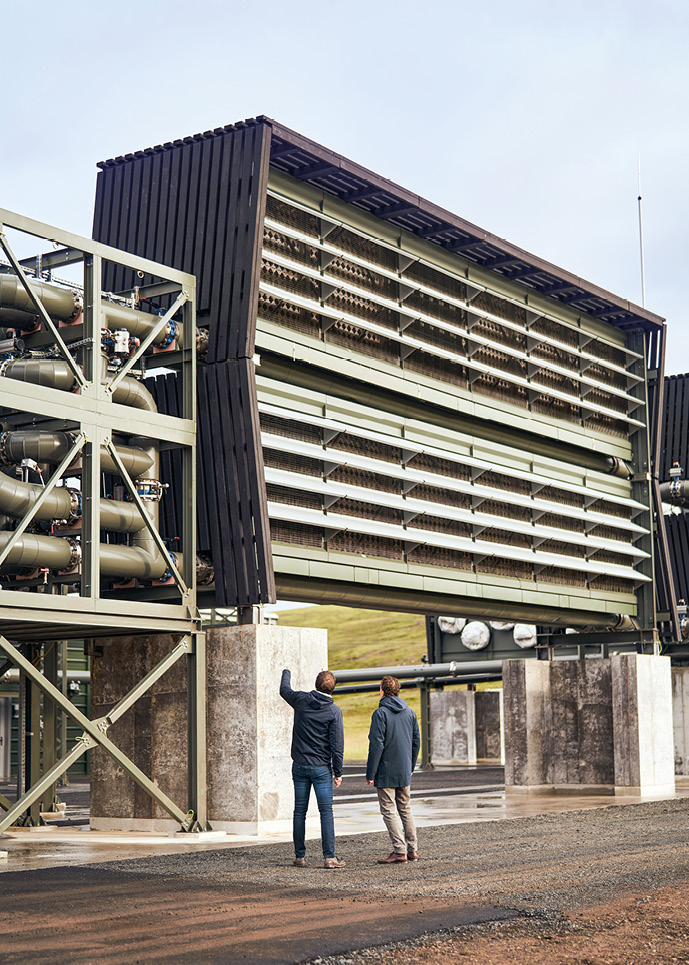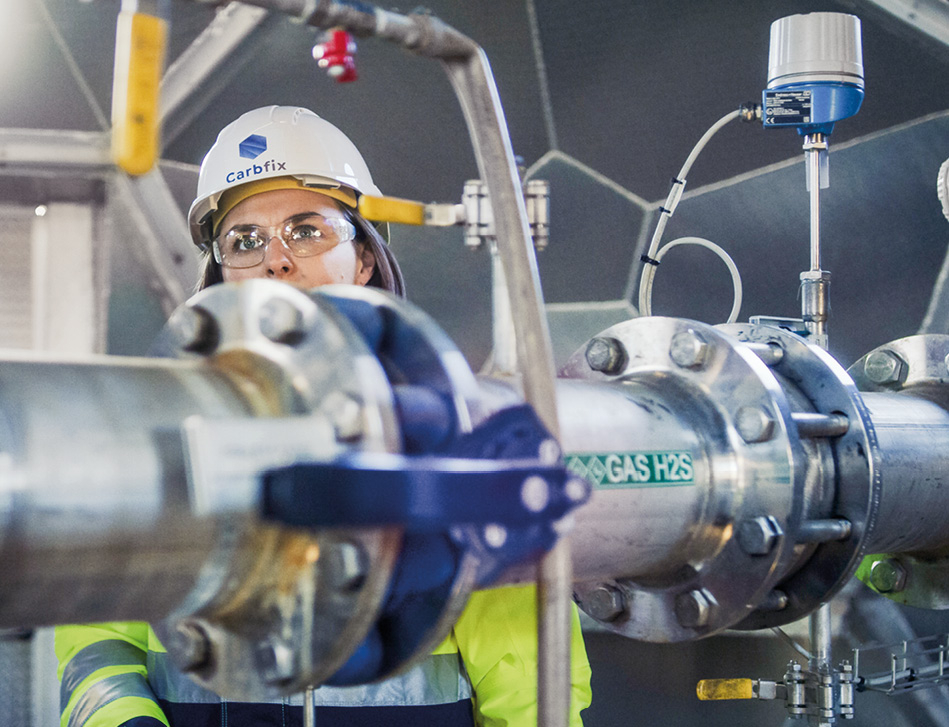Growing together
The systems of Swiss company Climeworks remove carbon dioxide from the air. They are becoming more powerful and cost-effective thanks to highly precise process data.

It was clear to Katrín Jakobsdóttir: “This is a milestone in the fight against climate change.” In the fall of 2021, Jakobsdóttir, the Prime Minister of Iceland, opened what is currently the world’s largest direct air capture and CO2 storage plant. Called Orca, it’s situated in Hellisheiði, a plateau east of Reykjavík.
Both the plant and its underlying direct air capture technology were developed by Swiss company Climeworks. The system consists of stackable, shipping container-sized collector units equipped with fans to draw in the surrounding air. Filter material inside the collectors captures CO2 on its surface. When the filters are saturated, they are heated to about 100 degrees Celsius to release the CO2 molecules, which are then removed from the collectors under negative pressure. The green energy used for the process comes from a geothermal plant in the vicinity. Local Icelandic company Carbfix mixes the greenhouse gas with water and pumps it some 1,000 meters underground, where it mineralizes in less than two years.

The Hellisheiði geothermal plant supplies the green energy needed for the capture process.

Orca, the direct air capture plant from Climeworks, captures up to 4,000 tonnes of CO2 from the air annually.

Carbfix mixes the CO2 with water and pumps it underground, where it mineralizes.
Orca captures up to 4,000 tonnes of CO2 annually, an extremely small amount when compared with the 35 billion tonnes being emitted into the atmosphere worldwide. The Intergovernmental Panel on Climate Change nevertheless says that limiting global warming to 1.5 degrees is possible only through negative emissions; in other words, constantly removing CO2 from the atmosphere. “The climate objectives cannot be achieved without capturing, utilizing and storing this gas,” emphasizes Arjan van Ginkel, Industry Manager for Oil, Gas and Chemicals at Endress+Hauser Netherlands.
Instruments for every requirement
Climeworks has quickly enhanced its technology over recent years. The first large-scale plant, which has been operating in Switzerland since 2017, captures only 900 tonnes a year. One reason the company has been able to refine the process so rapidly is Endress+Hauser. “Our technology is installed not only in Climeworks’ 15 worldwide direct air capture plants but in the test facilities as well,” says Francesco Cali, sales engineer at Endress+Hauser. Climeworks benefits from Endress+Hauser’s extensive portfolio. “Gaining a better understanding of the processes and increasing effectiveness calls for extremely precise measurements. And in the plants themselves, it’s essential to have robust instruments that can also withstand extreme and heavily fluctuating weather conditions. We can meet any customer requirement with our products and grow together,” says Francesco Cali.
Rapidly scalable
Climeworks is planning the next large-scale project with support from Endress+Hauser once again. The company also wants to significantly reduce the price per tonne of CO2 captured. That price is still relatively high because the concentration of CO2 in the atmosphere is much smaller than in flue gases, for example. Hence the capture process is more costly and energy intensive. Climeworks is still optimistic though. The price per tonne is expected to be between 100 and 200 US dollars by the year 2040. And companies such as Boston Consulting Group, Square and Microsoft are already relying on agreements with Climeworks to achieve their climate objectives in future.
Published 15.07.2022, last updated 14.09.2022.
Dive into the world of the process industry through new exciting stories every month with our «changes» newsletter!









